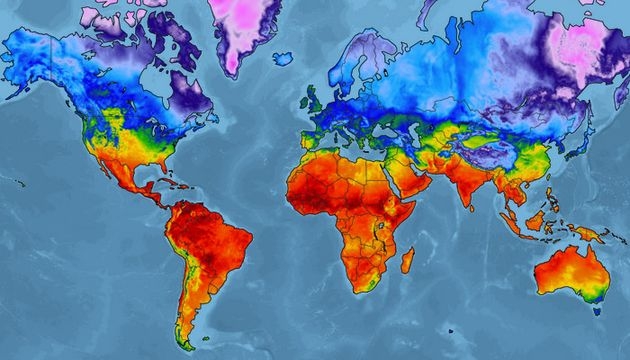Heat Wave in the USA and Improved Weather Conditions in the Black Sea Region are Key Factors Affecting Markets in the Coming Weeks

Traders are currently focusing on the weather conditions in Russia, where the situation for spring crops is improving, as well as in the southeastern United States, which is experiencing a heatwave but is expected to see new thunderstorms and rain next week.
Throughout this week, daily rains and thunderstorms have continued in the northwestern part of the Midwest and the Central and Southern Plains of the United States, which has been very beneficial for crop development. However, in the southeastern "corn belt," abnormally high temperatures have reduced soil moisture reserves, causing stress for the emerging spring crops. Next week, the thunderstorm front is expected to move east, leading to a decrease in temperature and significant rainfall, followed by another wave of thunderstorms by the end of the week, which will bring temperatures back to normal.
In early June, the weather in the United States remains very favorable for all agricultural crops, which puts significant pressure on soybean, corn, and wheat prices. In the Canadian prairies, strong rains continued this week, particularly in the south and east, while temperatures in the west and north slightly decreased. Overall, spring wheat and canola are developing under very favorable conditions. Next week, several waves of rain and thunderstorms are also expected, further improving crop conditions and moisture reserves, which have already led to a decrease in canola prices.
In southern Brazil, the state of Rio Grande do Sul is experiencing excessive rainfall, causing flooding, while the central regions, where the second corn crop is grown, are suffering from hot and dry weather. Harvesting of the second corn crop is progressing at twice the average pace due to the hot and dry weather, while the sowing of winter wheat in the south is delayed due to the rains.
In Argentina, rains continue across the country this week, and several more waves of precipitation are expected next week, accelerating the sowing of winter wheat (65% of the planned area has already been sown) and improving production forecasts to near-record levels. Soybean harvesting is complete, and corn harvesting is 50% finished but slightly delayed due to rain and high grain moisture content.
This week, Western and Northern Europe have continued to experience rainfall, while France and Germany have faced unfavorable wet conditions for ripening winter wheat and developing corn. Over the weekend, the thunderstorm front is expected to move east and south towards the Mediterranean, improving moisture reserves for spring crops.
In the Black Sea region, several fronts with precipitation are expected over the weekend and next week, which will not improve the situation for winter crops already being harvested but will enhance moisture reserves for corn, sunflower, and soybeans. In Ukraine, scattered rains continue, but moderate temperatures allow spring crops to develop well even with limited rainfall.
In the European and Asian parts of Russia, rainfall ranging from 15 to 100 mm has improved the yield potential of spring crops, especially spring wheat in Siberia. This has immediately reflected in higher yield forecasts by local analysts and a drop in wheat prices on world markets to levels seen two months ago when Russian agencies sharply reduced wheat yield forecasts.
In the eastern and western growing regions of Australia, conditions remain favorable for the sowing and development of winter wheat, canola, and barley crops, with continued rainfall expected this and next week.


